Occupation Author, novelist | Name Shirley Jackson Role Author | |
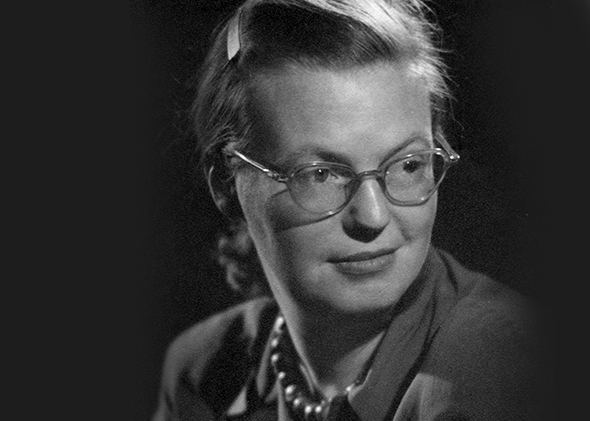 | ||
Born Shirley Hardie JacksonDecember 14, 1916San Francisco, California, U.S. ( 1916-12-14 ) Children Laurence Hymans, Barry Hymans, Joanne Hymans, Sarah Hymans Books The Lottery, The Haunting of Hill House, We Have Always Lived in t, The Lottery and Other Stories, Life Among the Savages Similar People | ||
Shirley jackson biography assignment
Shirley Hardie Jackson (December 14, 1916 – August 8, 1965) was an American writer. She was popular during her life, and her work has received increased attention from literary critics in recent years. She has been cited as an influence on a diverse set of authors, including Neil Gaiman, Stephen King, Nigel Kneale, Joanne Harris and Richard Matheson.
Contents
- Shirley jackson biography assignment
- A discussion of shirley jackson s the lottery
- Biography
- Death
- Work
- Adaptations
- Magazines
- Awards and honors
- Literary studies
- Shirley Jackson Awards
- Shirley Jackson Day
- References
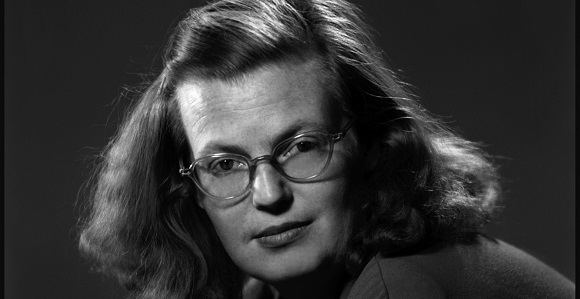
She is best known for the short story "The Lottery" (1948), which reveals a secret, sinister underside to a bucolic American village, and for The Haunting of Hill House (1959), which is widely considered to be one of the best ghost stories ever written. In her critical biography of Jackson, Lenemaja Friedman notes that when "The Lottery" was published in the June 26, 1948, issue of The New Yorker, it received a response that "no New Yorker story had ever received". Hundreds of letters poured in that were characterized by, as Jackson put it, "bewilderment, speculation, and old-fashioned abuse". In the July 22, 1948, issue of the San Francisco Chronicle, Jackson offered the following in response to persistent queries from her readers about her intentions:
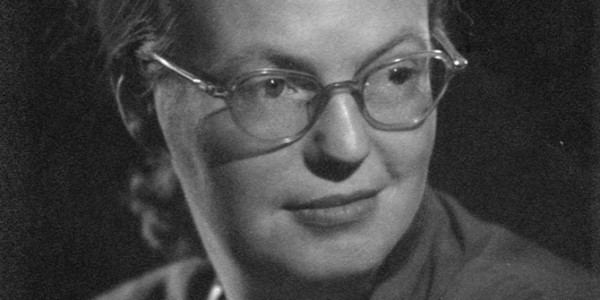
Explaining just what I had hoped the story to say is very difficult. I suppose, I hoped, by setting a particularly brutal ancient rite in the present and in my own village to shock the story's readers with a graphic dramatization of the pointless violence and general inhumanity in their own lives.
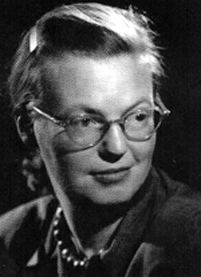
Jackson's husband, the literary critic Stanley Edgar Hyman, wrote in his preface to a posthumous anthology of her work that "she consistently refused to be interviewed, to explain or promote her work in any fashion, or to take public stands and be the pundit of the Sunday supplements. She believed that her books would speak for her clearly enough over the years". Hyman insisted that the dark visions found in Jackson's work were not, as some critics claimed, the product of "personal, even neurotic, fantasies", but, rather, comprised "a sensitive and faithful anatomy" of the Cold War era in which she lived, "fitting symbols for [a] distressing world of the concentration camp and the Bomb." Jackson may even have taken pleasure in the subversive impact of her work, as revealed by Hyman's statement that she "was always proud that the Union of South Africa banned 'The Lottery', and she felt that they at least understood the story".
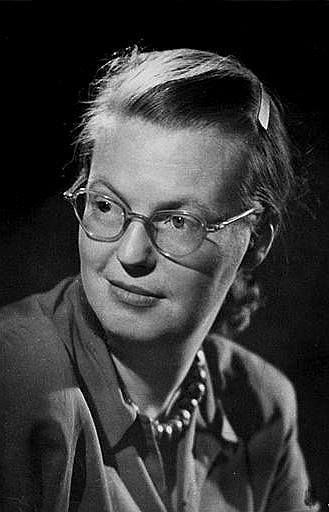
A discussion of shirley jackson s the lottery
Biography
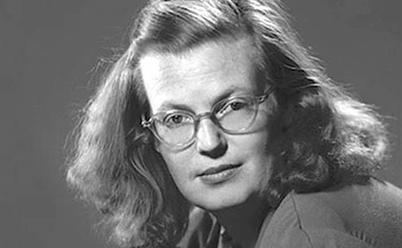
Although Jackson claimed to have been born in 1919 to appear younger than her husband, birth records state that she was born in December 1916. Born in San Francisco, California, to Leslie and Geraldine Jackson, Jackson and her family lived in the community of Burlingame, California, an affluent middle-class suburb that would be featured in Shirley's first novel, The Road Through the Wall (1948). Her relationship with her mother, who could trace her family heritage to the Revolutionary War hero General Nathanael Greene, was strained, as her parents had married young and Geraldine had been disappointed when she immediately became pregnant with Shirley, as she had been looking forward to "spending time with her dashing husband". Jackson was often unable to fit in with other children and spent much of her time writing, much to her mother's distress. When she was a teenager, her weight fluctuated, resulting in a lack of confidence. After the family relocated to Rochester, New York, Shirley attended Brighton High School and received her diploma in 1934. She then attended the nearby University of Rochester, where her parents felt they could keep an eye on her. She was not happy in her classes there, and professors often judged her writing harshly, so she transferred to Syracuse University, where she flourished creatively and socially. While a student at Syracuse, Jackson became involved with the campus literary magazine, through which she met her future husband, Stanley Edgar Hyman, who would become a noted literary critic.
After their marriage and brief sojourns in New York City and Westport, Connecticut, Jackson and Hyman settled in North Bennington, Vermont, where Hyman became a professor at Bennington College, as Jackson continued to publish novels and short stories. For Stanley J. Kunitz and Howard Haycraft's Twentieth Century Authors (1955), she wrote:
I very much dislike writing about myself or my work, and when pressed for autobiographical material can only give a bare chronological outline which contains, naturally, no pertinent facts. I was born in San Francisco in 1919 and spent most of my early life in California. I was married in 1940 to Stanley Edgar Hyman, critic and numismatist, and we live in Vermont, in a quiet rural community with fine scenery and comfortably far away from city life. Our major exports are books and children, both of which we produce in abundance. The children are Laurence, Joanne, Sarah, and Barry: my books include three novels, The Road Through the Wall, Hangsaman, The Bird's Nest and a collection of short stories, The Lottery. Life Among the Savages is a disrespectful memoir of my children.
Jackson and Hyman were known for being colorful, generous hosts, who surrounded themselves with literary talents, including Ralph Ellison. They were both enthusiastic readers whose personal library was estimated at over 100,000 books. They had four children, Laurence (Laurie), Joanne (Jannie), Sarah (Sally), and Barry, who would come to their own brand of literary fame as fictionalized versions of themselves in their mother's short stories.
According to Jackson's biographers, the marriage was plagued by Hyman's infidelities, notably with his students. He controlled most aspects of their relationship. She was required to accept his infidelities (he called her a "fool" when she expressed her intense dislike of the situation). He controlled their finances (meting out portions of her earnings to her as he saw fit), despite the fact that after the success of "The Lottery" and later work she earned far more than he did. He insisted that she raise the children and do all the mundane household chores. She felt patronized in her role as a faculty wife, and ostracized by the townspeople of North Bennington. Her dislike of this situation led to her increasing abuse of alcohol, tranquilizers, and amphetamines, and influenced the themes of much of her later work.
Death
In 1965, Jackson died of heart failure in her sleep, at her home in North Bennington, at the age of 48. She was overweight and a heavy smoker who had for years suffered health issues related to the two issues. Near the end of her life, Jackson was seeing a psychiatrist for severe anxiety, which had kept her housebound for nearly the whole of the previous year. The doctor prescribed barbiturates, at that time considered a safe, harmless drug. For many years prior, she also had periodic prescriptions for amphetamines for weight loss, which may have inadvertently aggravated her anxiety, leading to a cycle of prescription drug abuse using the two medications to counteract each other's effects. Any of these factors, or a combination of all of them, may have contributed to her declining health and early death.
Work
Jackson's most famous story, "The Lottery", first published in the New Yorker on June 26, 1948, established her reputation as a master of the horror tale. The story prompted over 400 letters from readers, many of them outraged at its conjuring of a dark aspect of human nature. The critical reaction was unequivocally positive; the story quickly became a standard in anthologies and was adapted for television in 1952.
Her novel The Haunting of Hill House (1959) is a highly regarded example of the haunted house story, and was described by Stephen King as one of the important horror novels of the twentieth century. This contemporary updating of the classic ghost story has a vivid and powerful opening paragraph:
No live organism can continue for long to exist sanely under conditions of absolute reality; even larks and katydids are supposed, by some, to dream. Hill House, not sane, stood by itself against its hills, holding darkness within; it had stood so for eighty years and might stand for eighty more. Within, walls continued upright, bricks met neatly, floors were firm, and doors were sensibly shut; silence lay steadily against the wood and stone of Hill House, and whatever walked there, walked alone.
An earlier novel, Hangsaman (1951), and her short story "The Missing Girl" (from Just an Ordinary Day, the 1995 collection of previously unpublished or uncollected short stories) both contain certain elements similar to the mysterious real-life December 1, 1946, disappearance of an 18-year-old Bennington College sophomore, Paula Jean Welden of Stamford, Connecticut. This event, which remains unsolved to this day, took place in the wooded wilderness of Glastenbury Mountain near Bennington in southern Vermont, where Jackson and her family were living at the time. The fictional college depicted in Hangsaman is based in part on Jackson's experiences at Bennington College, as indicated by Jackson's papers in the Library of Congress.
Her other novels include The Bird's Nest (1954), We Have Always Lived in the Castle (1962), and The Sundial (1958).
In addition to her adult literary novels, Jackson wrote a children's novel, Nine Magic Wishes, available in an edition illustrated by her grandson, Miles Hyman, as well as a children's play based on Hansel and Gretel, entitled The Bad Children.
She also wrote humorous sketches and short stories depicting everyday aspects of family life, which she published in popular magazines, such as Good Housekeeping, Woman's Day and Collier's, and later collected in her books Life Among the Savages (1953) and Raising Demons (1957). Semi-fictionalized versions of her marriage and the experience of bringing up four children, these works are "true-to-life funny-housewife stories" of the type later popularized by such writers as Jean Kerr and Erma Bombeck during the 1950s and 1960s.
After her death, Jackson's husband released a posthumous volume of her work, Come Along with Me, containing her unfinished last novel, as well as 14 previously uncollected short stories (among them "Louisa, Please Come Home") and three lectures she gave at colleges or writers' conferences in her last years.
Adaptations
In addition to radio, television, and theater adaptations, "The Lottery" has been filmed three times, most notably in 1969 as an acclaimed short film that director Larry Yust made for an Encyclopædia Britannica educational film series. The Academic Film Archive cited Yust's short "as one of the two bestselling educational films ever".
Magazines
In 1938, while Jackson was studying at Syracuse, her first published story, "Janice", appeared, and the stories that followed were published in Collier's, Good Housekeeping, Harper's, Mademoiselle, The New Republic, The New Yorker, Woman's Day, Woman's Home Companion, and other publications.
In 1996, a crate of unpublished stories was found in the barn behind Jackson's house. The best of those stories, along with previously uncollected stories from various magazines, were published in the 1996 collection Just an Ordinary Day. The title was taken from one of her stories for The Magazine of Fantasy & Science Fiction, "One Ordinary Day, with Peanuts".
Jackson's papers are available in the Library of Congress. In its August 5, 2013, issue The New Yorker published "Paranoia", which the magazine said was discovered at the library.
Awards and honors
Literary studies
Lenemaja Friedman's Shirley Jackson (Twayne Publishers, 1975) is the first published survey of Jackson's life and work. Judy Oppenheimer also covers Shirley Jackson's life and career in Private Demons: The Life of Shirley Jackson (Putnam, 1988). S. T. Joshi's The Modern Weird Tale (2001) offers a critical essay on Jackson's work.
A comprehensive overview of Jackson's short fiction is Joan Wylie Hall's Shirley Jackson: A Study of the Short Fiction (Twayne Publishers, 1993). The only critical bibliography of Jackson's work is Paul N. Reinsch's A Critical Bibliography of Shirley Jackson, American Writer (1919–1965): Reviews, Criticism, Adaptations (Edwin Mellen Press, 2001). Darryl Hattenhauer also provides a comprehensive survey of all of Jackson's fiction in Shirley Jackson's American Gothic (State University of New York Press, 2003). Bernice Murphy's recent Shirley Jackson: Essays on the Literary Legacy (McFarland, 2005) is a collection of commentaries on Jackson's work. Colin Hains's Frightened by a Word: Shirley Jackson & Lesbian Gothic (2007) explores the lesbian themes in Jackson's major novels.
According to the post-feminist critic Elaine Showalter, Jackson's work is the single most important mid-twentieth-century body of literary output yet to have its value reevaluated by critics in the present day. In a March 4, 2009, podcast distributed by the renowned business publisher The Economist, Showalter also revealed that Joyce Carol Oates has edited a collection of Jackson's work called Shirley Jackson Novels and Stories that was published in the critically esteemed Library of America series.
The 1980s witnessed considerable scholarly interest in Jackson's work. Peter Kosenko, a Marxist critic, advanced an economic interpretation of "The Lottery" that focused on "the inequitable stratification of the social order". Sue Veregge Lape argued in her Ph.D. thesis that feminist critics who did not consider Jackson to be a feminist played a significant role in her lack of earlier critical attention. In contrast, Jacob Appel has written that Jackson was an "anti-regionalist writer" whose criticism of New England proved unpalatable to the American literary establishment.
In October 2016, a further biography, Shirley Jackson: A Rather Haunted Life by Ruth Franklin, was published.
Shirley Jackson Awards
In 2007, the Shirley Jackson Awards were established with permission of Jackson's estate. They are in recognition of her legacy in writing, and are awarded for outstanding achievement in the literature of psychological suspense, horror, and the dark fantastic. The awards are presented at Readercon.
Shirley Jackson Day
Since at least 2015, Jackson's adopted home of North Bennington has honored her legacy by celebrating Shirley Jackson Day on June 27, the day the fictional story "The Lottery" took place.
